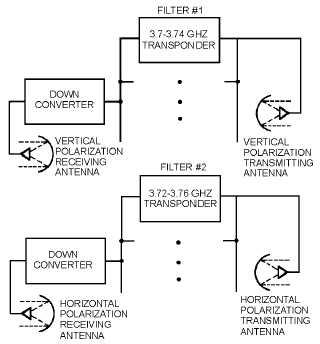4-11
Figure 4-8.—Satellite transmissions using polarized radiation.
Advantages of Vertical Polarization
Simple vertical antennas can be used to provide OMNIDIRECTIONAL (all directions)
communication. This is an advantage when communications must take place from a moving vehicle.
In some overland communications, such as in vehicular installations, antenna heights are limited to 3
meters (10 feet) or less. In such instances vertical polarization results in a stronger receiver signal than
does horizontal polarization at frequencies up to about 50 megahertz. From approximately 50 to 100
megahertz, vertical polarization results in a slightly stronger signal than does horizontal polarization with
antennas at the same height. Above 100 megahertz, the difference in signal strength is negligible.
For transmission over bodies of water, vertical polarization is much better than horizontal
polarization for antennas at the lower heights. As the frequency increases, the minimum antenna height
decreases. At 30 megahertz, vertical polarization is better for antenna heights below about 91 meters (300
feet); at 85 megahertz, antenna heights below 15 meters (50 feet); and still lower heights at the high
frequencies. Therefore, at ordinary antenna mast heights of 12 meters (40 feet), vertical polarization is
advantageous for frequencies less than about 100 megahertz.
Radiation is somewhat less affected by reflections from aircraft flying over the transmission path
when vertical polarization is used instead of horizontal polarization. With horizontal polarization, such
reflections cause variations in received signal strength. This factor is important in locations where aircraft
traffic is heavy.
When vertical polarization is used, less interference is produced or picked up because of strong vhf
and uhf broadcast transmissions (television and fm). This is because vhf and uhf transmissions use
horizontal polarization. This factor is important when an antenna must be located in an urban area having
several television and fm broadcast stations.



